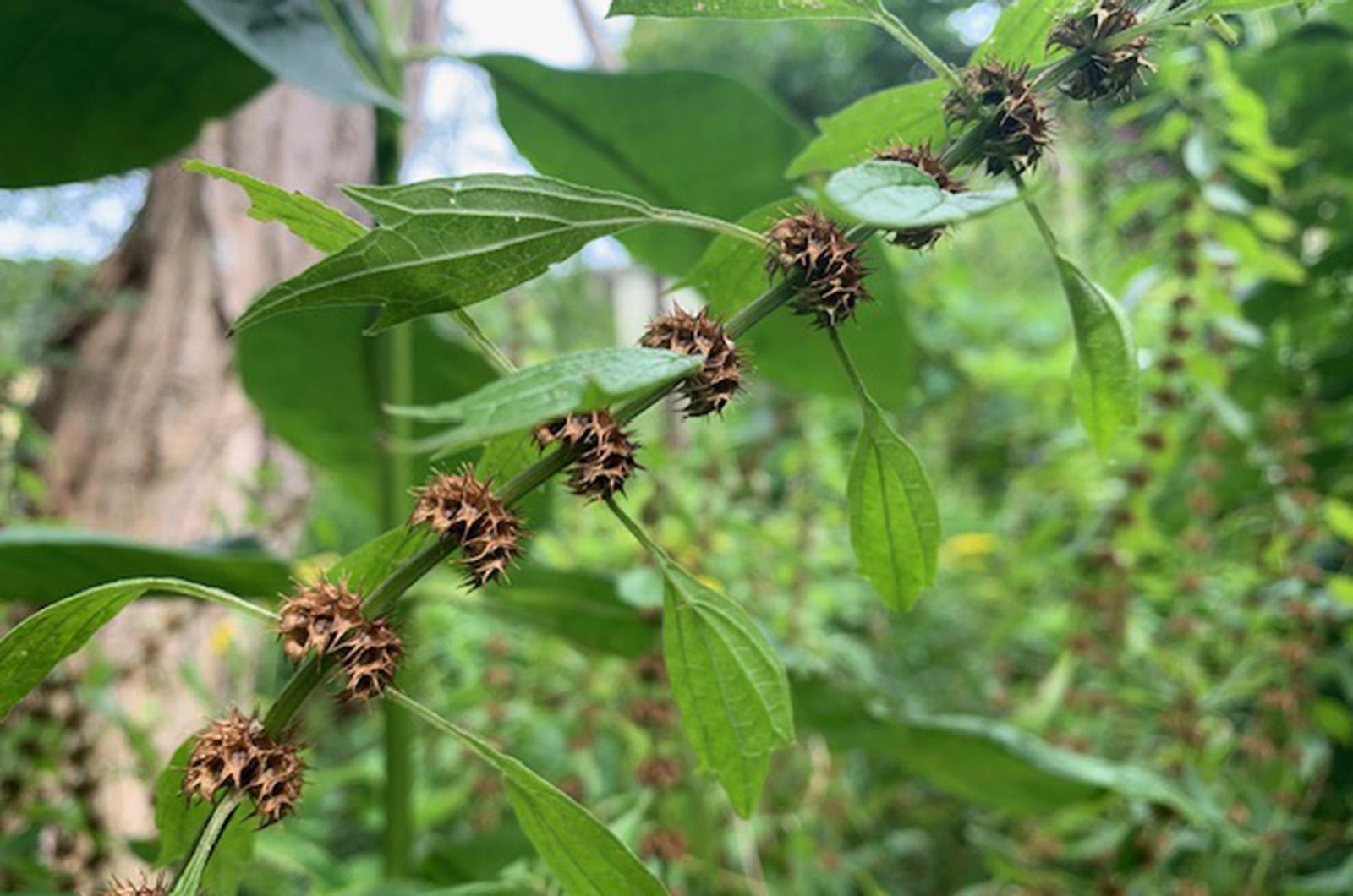Listen to your mother.
Unless she is my mother. Then just nod and smile when she gives advice.
There is one mother that doesn’t speak too loudly, provide unsolicited guidance and gets along superbly with everyone. This mother’s nurturing is judgment-free and could provide health and wellness to your body and your mind. And it won’t sass back since it is a plant.
Motherwort, also known as leonurus cardiaca, has a place in our yards, gardens, roadsides and waste places — and in some of our hearts and homes, too. Hailing from Asia and Europe, this plant is not a native here and has spread throughout the continent intentionally by its cultivation for herbal use and unintentionally because of its weedy nature. As a benefit to bees it has also been planted for pollination.
With an alias of lion’s tail, it isn’t surprising that this plant roars. That name could refer to its stalking flower that resembles a lion’s tail. Or conversely, the species name cardiaca refers to the heart, likely because of herbalists’ assertions of its heart health qualities. Other pseudonyms for this plant in the mint family include lion’s ear and throw-wart.
As a healing herb, its power, like many a mother, cannot be underestimated. Hailed as a cardiotonic, it can help manage an overactive heart, regulate blood pressure and calm cardiovascular disease.
Of course, with a name like motherwort, it is also enlisted for use in a variety of medical conditions associated with the uterus and maternity. These include calming the symptoms of menstruation and menopause, and preventing or stopping bleeding.
Seventeenth century British herbalist Nicholas Culpepper explains it in this unique way: “motherwort is useful for removing melancholy vapors from the heart, improving cheerfulness and settling the wombs of mothers.” More recently, in a 19th century book of American home remedies, motherwort is distinguished as “good for all nervous and hypochondriac conditions.”
A digression: note these descriptions as early examples of medicine downplaying women’s health issues.
To find out how to use this helpful herb, one only needs to look to local Island herbalist Holly Bellebuono, whose book The Healing Kitchen has some suggestions. Holly recommends infusing this herb in honey, syrups, vinegars and elixirs.
Others suggest using it fresh or dried for tea, though it is very bitter and so shouldn’t be steeped for too long lest it become too acrimonious for consumption. Tinctures are also a way to prepare and dose with motherwort. These can be created with the herb plus vodka or brandy and should be shelved for up to six weeks before use.
Doses vary and this column provides no recommendations other than to seek the advice of someone way more knowledgeable than I. It is also important to state that this remedy is not to be used by pregnant people.
With its maple-like leaves, pink-purple flowers directly on the plant’s square stem, and funky-looking fruit called a schizocarp, motherwort is not difficult to identify. This plant has its own agenda and doesn’t always keep to itself, often spreading far and wide and showing up in unexpected places — not unlike some people’s mothers.
Suzan Bellincampi is Islands director for Felix Neck Wildlife Sanctuary in Edgartown and the Nantucket Wildlife Sanctuaries. She is also the author of Martha’s Vineyard: A Field Guide to Island Nature and The Nature of Martha’s Vineyard.




Comments
Comment policy »